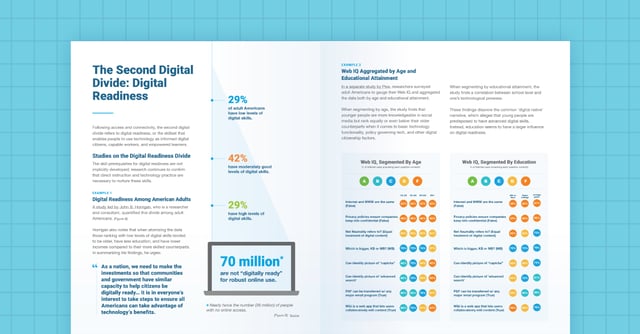What Four Divides Teach About Digital Equity, an Analysis

Equity in education is complex and multi-faceted, in part because it is a necessarily evolving concept. And with today’s fast accelerating technological advancements and a migration toward digital mediums for work, collaboration, community, and citizenship, equity must to a large extent be digital.
In short, digital equity sets out to remove barriers to entry and participation by ensuring everyone has the technological capacity to participate in these online spaces.
Still, what exactly is digital equity and how can educators support it in classrooms, schools, and districts?
In order to unpack and better understand digital equity, this whitepaper defines, quantifies, and analyzes four specific digital divides shaping it:
- The Access and Connectivity Divide
- The Digital Readiness Divide
- The Digital Use Divide
- The Representation Divide
And by studying enacted and proposed solutions alongside the work of educators in overcoming each divide, what we find is the importance of tackling issues of digital equity through small, community-driven changes—in a district’s parent night, a parent-teacher-student partnership built on digital wellness, a business project that instills design thinking, and a camp that encourages female students to pursue STEM.




